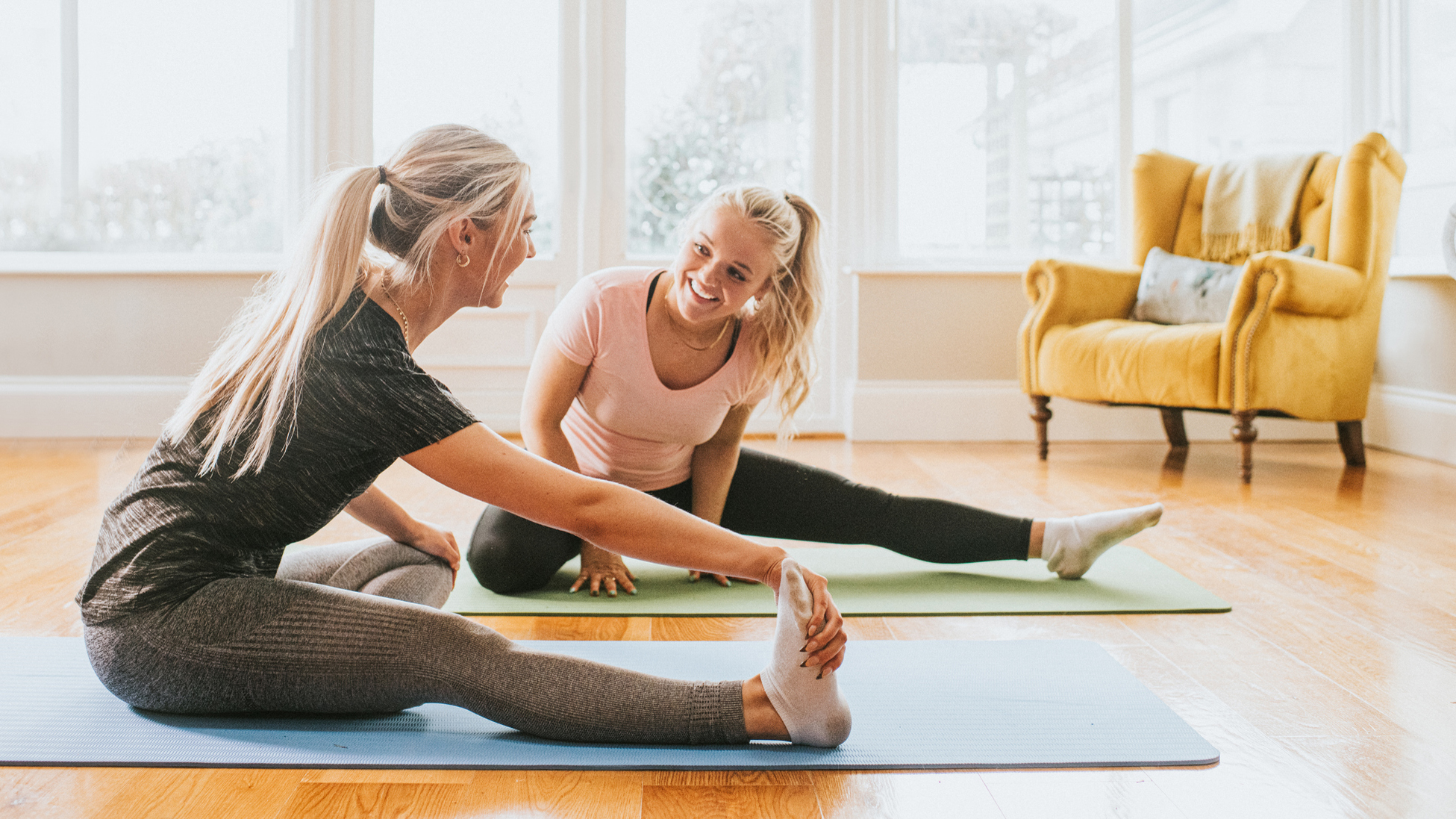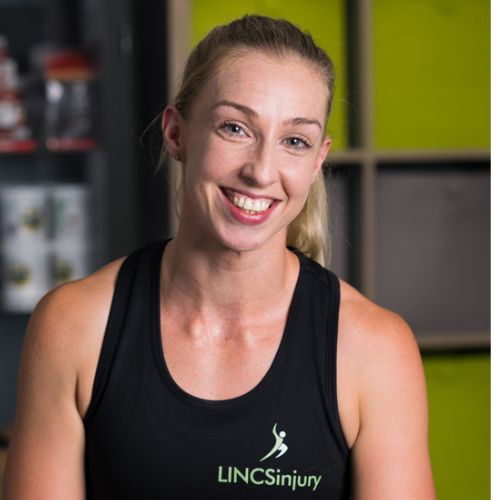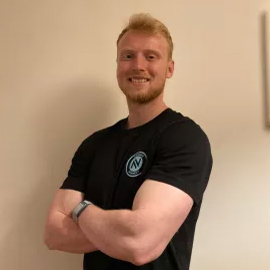Four expert-approved hip-strengthening exercises to "sort out tight hips for good"
Stretching may feel good, but a sports therapist says hip-strengthening exercises will help you fight tightness, aches and injuries in the long term


If you want to fight tight hips, a top sports therapist says hip-strengthening exercises should be your first port of call.
"Stretching helps you feel good for a bit, but that feeling maxes out at about seven minutes," says Lincs Injury Clinic founder Emma Burgon-Kisby. "Working on your hip strength is the way forward if you're looking to sort out tight hips for good."
Below she shares four of her favorite hip-strengthening exercises for targeting the hip flexors—a collection of muscles on the front of the pelvis responsible for bringing the knees towards the chest—as well as supporting muscles in the core
All you need is a short looped resistance band or kettlebell and a towel to give the moves a go.

Emma Burgon-Kisby is a sports therapist, strength and conditioning coach, and the founder of Lincs Injury Clinic. She has over a decade of experience and was recently named "Therapist of the Year" in Lincolnshire, UK.
Hip-strengthening exercises
1. Deadbug
How to do it
- Lie on your back, making sure you can feel your lower back on the ground. Tuck your tailbone up towards the ceiling and clench your glutes (butt muscles). Lift your legs so your knees are above your hips and your knees are at roughly 90°. Extend your arms towards the ceiling.
- Tense your abs and, as you breathe out, extend your right leg so it’s just above, but not resting on, the floor. At the same time, lower your left arm so it is also just above the floor above your head.
- Bring both limbs back to the starting position, then repeat the movement using the opposite limbs.
Benefits of deadbugs
Burgon-Kisby says this move is excellent for strengthening and lengthening the hip flexors, as well as the muscles in your deep core which play a major role in stabilizing the hips and lower back.
Start your week with achievable workout ideas, health tips and wellbeing advice in your inbox.
2. Towel slides
- Lie on your back on a smooth floor with your legs straight out in front of you. Point your toes towards the ceiling and place a towel underneath your heels.
- Press your heels into the ground to raise your glutes off the floor, then use your feet to slide the towel towards you.
- Push the towel back to the starting position with your feet, then repeat.
Benefits of towel slides
Towel slides are a brilliant way to target the muscles responsible for straightening your leg at the knee and moving your leg behind you. This exercise will work these muscles through their full range of motion, helping you develop stability and control in these areas.
"Towel slides can also have many progressions and regressions, making it a great exercise for everyone's ability—I even use it with the paralympic athlete I work with," adds Burgon-Kisby.
3. Knee tucks
- Sit on the edge of a bench or sturdy surface that’s roughly knee height with your legs straight and your heels resting on the ground (as in the second exercise demonstrated in the video above). Place a short looped resistance band around the middle of your feet.
- Place both hands over the edge of the surface, facing forwards, so they’re about shoulder-width apart, then straighten your arms so you’re supporting your weight between your hands and your heels.
- Draw your right knee towards your chest until your thigh is perpendicular with your torso, pause for a second, then lower it back to the starting position. Alternate the knee you raise with each repetition.
Benefits of knee tucks
Knee tucks allow us to work the hip joint and surrounding muscles through a large range of motion. Adding the resistance band will increase the load your muscles have to work against, making them stronger and priming them for functional daily movements.
"It’s also a movement that can improve posture and the walking gait [the pattern of how you walk]," says Burgon-Kisby.
4. Knee lifts
- Stand on a box, step, or bench with your left foot along the right side and your right foot hovering over the edge. Hook the end of your right shoe through the handle of a light kettlebell.
- Engage your core then, keeping your body straight and facing forward, raise your right knee as high as you can, then slowly lower it back to the starting position. Repeat for the prescribed repetitions, then do the same on your left leg.
Benefits of knee lifts
This movement pattern may feel familiar—you lift your knee like this when running or climbing stairs. Adding resistance with a kettlebell (or a short resistance band looped around the middle of both feet) places more demand on your hip flexor muscles to strengthen them. And that’s not all.
"Knee lifts are another one that can improve posture and the walking gait," Burgon-Kisby says. "This variation not only strengthens the muscles being used but also improves their endurance and resilience under load."
So, whether you’re exercising, playing sports, or simply going about your daily routine, the muscles will perform better and have a reduced risk of injury.
How to build hip strength
If you want stronger hips, strength training should be your first port of call. You shouldn't just focus on developing your hip flexor muscles though. You also want to strengthen stabilizers surrounding the hips like the hamstrings (thigh muscles), glutes (backside), and deep core muscles. Building comprehensive strength in this area will reduce your risk of injury.
The exercises above will target the hips, while other lower-body compound exercises like squats and glute bridges will also work this joint through a wide range of motion.
To increase your hip strength using these exercises, the usual strength training principles apply. That means you need to adhere to the progressive overload principle (gradually increasing the difficulty of these exercises) to see continued improvement.
Why strengthen the hip flexors?
The hip flexors are a group of muscles on the front of the pelvis responsible for bringing the knee closer to the chest. Walking, kicking, running, and climbing the stairs rely heavily on these muscles, so you need a strong set for a fit and functional body.
Unfortunately, prolonged sitting and underuse can weaken these muscles.
"Prolonged and constant hip flexion from continuous sitting can result in the muscle group becoming restricted," according to the Southern California Hip Institute. "They may become chronically tight, which can prevent the leg from correctly traveling behind the body while running or walking. Other body parts need to compensate when this happens."
One of the best ways to combat this is to incorporate more regular movement into your day, including hip-strengthening exercises to keep these muscles from becoming tight and weak. This will reduce your risk of injury in this area and lessen the need for other muscles to compensate.
Hip strength exercises vs. hip stretches
The muscles surrounding our hips can weaken if we don't use them enough, which happens if we spend most of our time sitting down. So Burgon-Kisby's suggestion to focus on strengthening, rather than stretching them, makes sense if you're trying to undo this damage and rebuild these muscles.
"Making sure you're moving your hip flexors through their full range is key to mobility for the long haul, and it can even help ease off back pain, hip pain, and knee pain and keep you steady during squats and lunges," she adds.
Strengthening other areas of your lower body can also help fight the effects of sitting down all day. If that's your aim, have a look through our list of the best glute exercises, or try doing this squat workout.

Harry Bullmore is a Fitness Writer for Fit&Well and its sister site Coach, covering accessible home workouts, strength training session, and yoga routines. He joined the team from Hearst, where he reviewed products for Men's Health, Women's Health, and Runner's World. He is passionate about the physical and mental benefits of exercise, and splits his time between weightlifting, CrossFit, and gymnastics, which he does to build strength, boost his wellbeing, and have fun.
Harry is a NCTJ-qualified journalist, and has written for Vice, Learning Disability Today, and The Argus, where he was a crime, politics, and sports reporter for several UK regional and national newspapers.